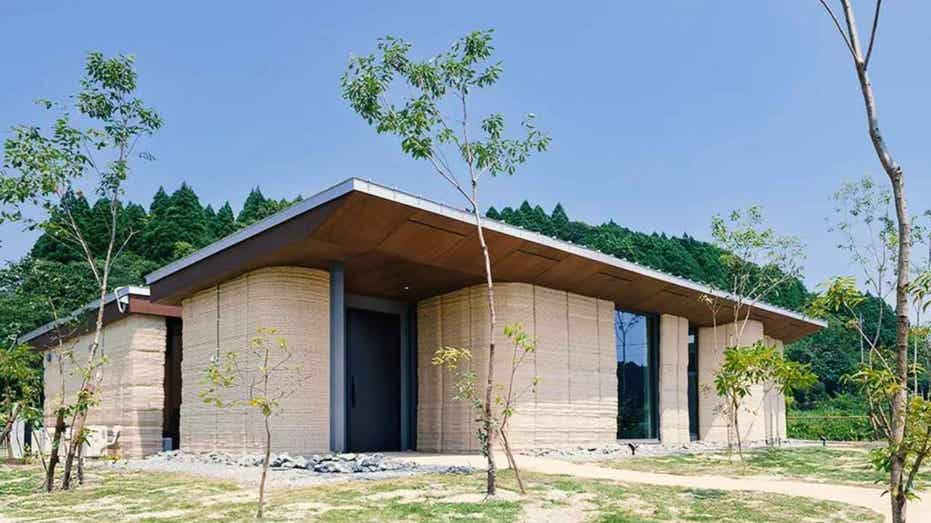Sustainable 3D-printed home built primarily from soil

Introducing the Lib Earth House Model B: A Groundbreaking Step Toward Eco-Friendly Housing
A pioneering residential project in Japan is capturing attention worldwide, promising to transform the construction landscape. The Lib Earth House Model B, located in Yamaga, Kumamoto Prefecture, is a stunning example of sustainable architecture. This innovative, single-story home was constructed using cutting-edge 3D-printing technology and a unique soil-based mixture, instead of traditional concrete. Its design exemplifies a bold shift toward environmentally responsible building practices, blending technological innovation with nature to create a model for future housing development.
A Closer Look at the Construction Materials and Process
The team behind this project, including Lib Work Co., Arup, and the 3D-printing company WASP, opted for a eco-friendly alternative to cement. They developed a special composite made from earth, lime, and natural fibers—ingredients that are renewable, abundantly available, and gentle on the planet. These materials not only reduce environmental impact but also promote sustainability in construction.
During the building process, WASP’s advanced 3D printer meticulously layered this soil-based mixture to form the home’s curved walls and textured surfaces. Once the primary structure was complete, human workers installed the windows, doors, and roofing, seamlessly integrating manual craftsmanship with automated technology. The result is a home that balances durability, aesthetics, and ecological responsibility.
Interior Design and Architectural Style
The interior of the Lib Earth House radiates brightness and modernity. Large panoramic windows flood the living spaces with natural light, enhancing the airy feel. The sleek lines and minimalist aesthetic emphasize space and comfort. The flat roof and textured exterior walls subtly reveal the home’s innovative 3D-printed origins, blending form and function in harmony.
Smart Technology and Off-Grid Living
This innovative dwelling isn’t just eco-friendly—it’s also equipped with advanced smart systems. Powered by solar panels and Tesla’s Powerwall battery, the home operates independently from traditional energy grids, supplying power for lighting, climate control, and even a smart bathroom. All systems can be managed remotely via smartphone or voice commands, offering convenience and efficiency.
Embedded sensors continuously monitor the home’s performance, tracking parameters such as insulation quality, humidity levels, and structural integrity. These real-time insights will inform future improvements, ensuring longevity and resilience while advancing sustainable design.
Environmental Benefits and Future Prospects
The Lib Earth House serves as a prototype for environmentally conscious living. By avoiding concrete and utilizing earth-friendly materials that can decompose naturally, it significantly reduces landfill waste and carbon emissions. For environmentally-minded individuals, energy-conscious homeowners, and tech enthusiasts, this project offers a promising glimpse into the future of residential construction.
Lib Work Co. has plans to produce up to 10,000 units by 2040, with pre-orders beginning in August. Currently available only in Japan, expansion initiatives are underway to introduce these homes to other markets, potentially revolutionizing how we think about sustainable housing worldwide.
A New Standard for Comfortable, Green Living
From raw soil to sophisticated structure, the Lib Earth House Model B demonstrates that sustainable homes can be stylish, comfortable, and technologically advanced. Its innovative energy systems and earth-friendly design set a new benchmark, actively addressing both environmental challenges and housing needs.
Would you consider living in a house built from the very ground beneath your feet? Share your thoughts by reaching out through the contact page. This project exemplifies how eco-conscious architecture can create a better future for all.


